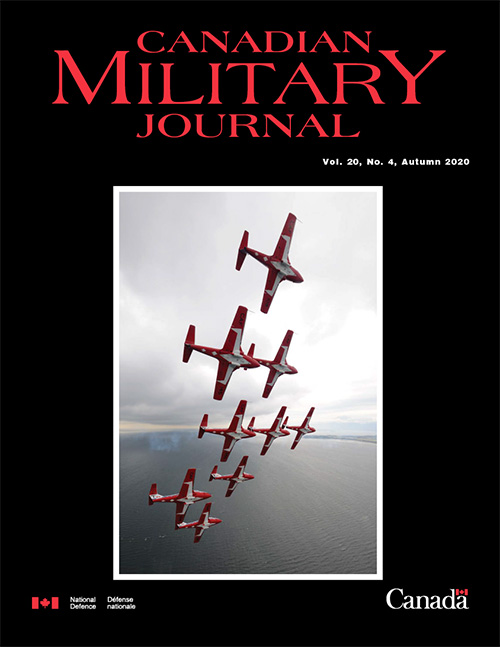Letters to the Editor
For more information on accessing this file, please visit our help page.

Sir,
I found Daniel Gosselin’s article on Civil-Military Relations (Vol. 20, No. 4, Autumn 2020) as interesting as his previous work on the subject. It is a varied and somewhat complex subject but, in the end, one hopes that both the deputy minister (DM) and the chief of defence staff (CDS) combine to give the strongest possible professional (including military) advice to the government, if not in tandem, at least not in direct competition with one another.
It is inevitable that one or the other will stray from his/her lane from time to time. Much depends on personalities. Will the CDS accept advice from the DM on promotions and appointments of senior military officers with whom the DM works, for example? Or vice versa regarding senior civilians?
Protocols that allow the CDS direct access to the Minister and to the Prime Minister if necessary have long been in place. The DM will see the minster frequently, the PM less so. In my view, the diarchy that prevails in NDHQ today allows blended advice to issue from the department/Canadian Armed Forces to the minister. Advice is not a zero sum game and nor is advice mutually exclusive. This is not to deny the CDS an opportunity to offer specific ‘military advice’ as he deems necessary.
One anecdote might be of interest to readers regarding the Gosselin mention of the reorganisation of Defence following the report of the Independent Management Review Group in 1972. Initially there were two uniformed deputy chiefs of defence staff appointed, one for operations and one for support. In the face of a call for increased civilian representation and in direct response to the then-CDS’ (Jacques Dextraze) demand to have a general as ADM Personnel, the military position of DCDS (Support) was suppressed in favour of creating ADM Materiel, a position that exists to this day.
Yours sincerely,
David B. Collins
Former Canadian High Commissioner to Pakistan
Sir,
I would like to commend yourself and the author, Major Dan Doran, on the excellent article “Sacrificing Culture in the Name of Strategy: Why Militia Armouries Matter” in the Autumn 2020 issue. There is unfortunately a bit of a gaffe in it, which perhaps only people living out this way would notice. The Hastings and Prince Edward Regiment—with companies today in Belleville, Peterborough, and Cobourg—has not had a presence in the armoury in Picton, Ontario, since 1965, when the building was declared surplus. The photo on page 68 shows the armoury after a recent thoroughgoing renovation; clearly visible are the names of some of the many commercial tenants occupying space in the building. Also housing artists’ workshops and a gym, the space is a stunningly imaginative reconstruction that will no doubt continue to be useful to a far broader range of the local population than was possible when it belonged to the military. Although well beyond the scope of Major Doran’s article, the “afterlife,” if you will, of the Picton armoury demonstrates beautifully how surplus Militia armouries continue to contribute to the country that built them.
Brian Bertosa
Cobourg, Ontario

Brian Bertosa
The interior of the former Hastings and Prince Edward Regiment armoury in Picton, Ontario







